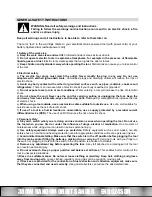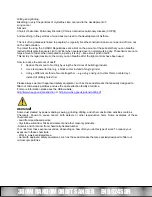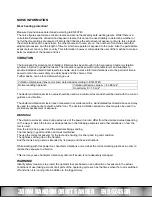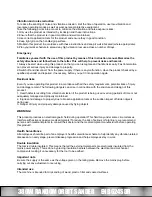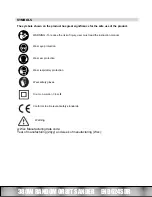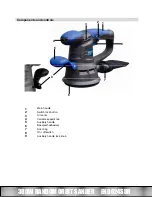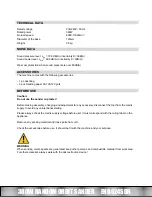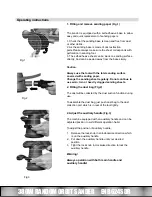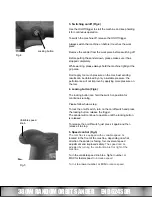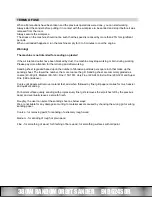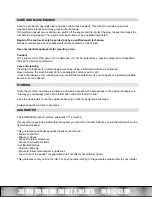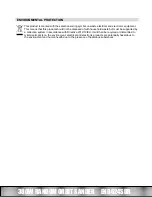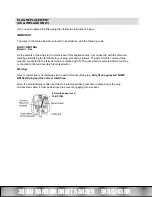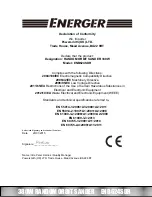
380W RANDOM ORBIT SANDER ENB624SDR
GENERAL SAFETY INSTRUCTIONS
WARNING. Read all safety warnings and instructions.
Failing to follow the warnings and instructions can result in an electric shock, a fire
and/or a serious injury.
Keep all warnings and all instructions to be able to refer to them later on.
The term “tool” in the warnings refers to your electrical mains powered tool (with power cord) or your
battery operated tool (without power cord).
1 Safety of the work area
a)
Keep the work area clean and well lit.
Cluttered and dark areas invite accidents.
b)
Do not operate electric tools in explosive atmospheres, for example in the presence of flammable
liquids, gases or dust.
Electric tools create sparks that can ignite the dust or fumes.
c)
Keep children and bystanders away while operating the tool.
Distractions can cause you to lose control
of the tool.
2 Electrical safety
a)
The electric tool plugs must match the outlet. Never modify the plug in any way. Do not use
adapters with earthed (grounded) tools.
Unmodified plugs and matching outlets will reduce the risk of
electric shock.
b)
Avoid any body contact with earthed or grounded surfaces such as pipes, radiators, cookers and
refrigerators.
There is an increased risk of electric shock if your body is earthed or grounded.
c)
Do not expose tools to rain or wet conditions.
Water entering a tool will increase the risk of electrical
shock.
d)
Do not abuse the cord. Never use the cord for carrying, pulling or unplugging the tool. Keep the
cord away from heat, lubricants, edges and moving parts.
Damaged or entangled cords increase the risk
of electric shock.
e)
When using a tool outside, use an extension cable suitable for outside use.
Use of a cord suitable for
outside use reduces the risk of electric shock.
f)
If use of a tool in a humid location is unavoidable, use a supply protected by a residual current
differential device (RCD).
The use of an RCD reduces the risk of electric shock.
3 Personal safety
a)
Stay alert, watch what you are doing and use common sense when operating the tool. Do not use
the tool when you are tired or under the influence of drugs, alcohol or medication.
One moment of
carelessness while using a tool can result in serious personal injury.
b)
Use safety equipment. Always wear eye protection.
Safety equipment such as dust masks, non-slip
safety shoes, a hard hat and hearing protection used for appropriate conditions will reduce personal injuries.
c)
Avoid unintentional starting. Make sure that the switch is in the off position before plugging the tool
into the mains and/or fitting the batteries, picking it up or carrying it.
Carrying tools with your finger on
the switch or plugging in tools with the switch in the on position is a cause of accidents.
d)
Remove any adjustment key before operating the tool.
A key left attached to a rotating part of the tool
can result in personal injury.
e)
Do not overreach. Keep a proper position and balance at all times.
This enables better control of the
tool in unexpected situations.
f)
Dress in a suitable manner. Do not wear loose clothing or jewellery. Keep hair, clothing and gloves
away from moving parts.
Loose clothing, jewellery or long hair can be caught in moving parts.
g)
If devices are provided for the connection of dust extraction and collection equipment, make sure
that they are connected and used correctly.
Using dust collectors can reduce the dust-related risks.



